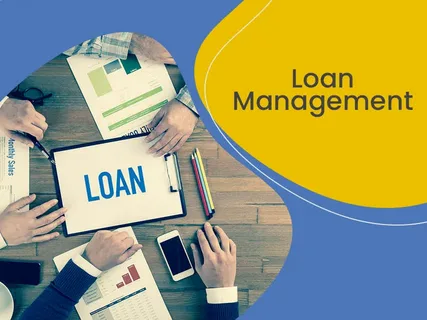A construction loan rates is a specialized type of financing designed to cover the costs of building or renovating a residential property. Unlike a traditional mortgage, which provides funds to purchase an existing home, a construction loan provides the money needed to pay for labor, materials, and other expenses during the construction phase.
The key distinction between a construction loan and a regular mortgage is that the former is a short-term loan that covers only the construction period, typically ranging from six months to a year. Once the construction is complete, the borrower must either pay off the construction loan or convert it into a permanent mortgage.
The purpose of a construction loan rates is to provide financing for the building or renovation of a residential property when traditional mortgage options are not available or suitable.
Different Types of Construction Loans
Construction-to-Permanent Loans
Construction-to-permanent loans are a popular choice for many homebuyers and builders. This type of loan combines the construction financing and the traditional mortgage into a single loan. During the construction phase, the lender provides the funds needed to cover the cost of building the home. Once the construction is complete, the loan automatically converts to a permanent mortgage, typically a 15- or 30-year fixed-rate mortgage.
One of the key advantages of a construction-to-permanent loan is that you only have to go through the application and approval process once. This streamlines the process and can save time and effort. Additionally, these loans often offer competitive interest rates and may require a lower down payment compared to separate construction and mortgage loans.
Construction-Only Loans
As the name suggests, construction-only loans are designed solely for financing the construction phase of a project. These loans are typically short-term, lasting for the duration of the construction process, which can range from several months to a year or more, depending on the scope of the project.
Construction-only loans are often interest-only, meaning that during the construction phase, you’ll only be responsible for paying the interest on the borrowed amount. Once the construction is complete, you’ll need to secure a separate mortgage or refinance the construction loan into a permanent mortgage.
These loans are commonly used by professional builders, developers, or individuals who plan to sell the property after construction is finished. They offer flexibility in terms of draw schedules and disbursement of funds as the project progresses.
Understanding Construction Loan Interest Rates
Construction loans are a specialized type of financing used to fund the construction of a new home or renovation of an existing property.
One of the key factors to consider when obtaining a construction loan is the interest rate. Construction loan interest rates can vary significantly from lender to lender and are influenced by several factors. In this section, we’ll explore what construction loan interest rates are, the factors that affect them, and how they compare to traditional mortgage rates.
Explanation of Construction Loan Interest Rates
Construction loan interest rates can be either fixed or variable. Fixed-rate construction loans have an interest rate that remains constant throughout the construction period, providing predictability and stability for the borrower. Variable-rate construction loans, on the other hand, have interest rates that fluctuate based on market conditions, potentially resulting in higher or lower payments over time.
Factors Affecting Construction Loan Interest Rates
Several factors can influence the interest rates offered by lenders for construction loans. These include:
-
Loan-to-Value Ratio (LTV): The LTV ratio compares the loan amount to the projected value of the completed property. Lenders typically prefer lower LTV ratios, as they represent a lower risk.
-
Lender’s Risk Assessment: Lenders will assess the overall risk of the construction project, considering factors such as the borrower’s experience, the complexity of the project, and the location.
-
Loan Term and Repayment Plan: Longer loan terms and more flexible repayment plans may result in higher interest rates to compensate for the increased risk to the lender.
Comparison with Traditional Mortgage Rates
Construction loan interest rates are generally higher than traditional mortgage rates for several reasons:
-
Shorter Term: Construction loans typically have shorter terms than traditional mortgages, ranging from 6 to 24 months, which can result in higher interest rates.
-
Interest-Only Payments: During the construction phase, borrowers typically only make interest-only payments, which can increase the overall cost of the loan.
Once the construction is complete, borrowers often refinance their construction loan into a traditional mortgage, which typically has a lower interest rate and longer repayment term.
Overview of Construction Loan Fees
Construction loans come with various fees that borrowers should be aware of before embarking on a construction project. These fees can add up and significantly impact the overall cost of the loan. Here’s an overview of some common fees associated with construction loans:
Appraisal Fee: This fee covers the cost of hiring a professional appraiser to evaluate the value of the property and the proposed construction project. The appraisal is a crucial step in the loan approval process, as it helps the lender determine the appropriate loan amount.
Inspection Fees: During the construction process, the lender will typically require periodic inspections to ensure that the work is progressing according to the approved plans and specifications. These inspection fees are charged by the lender or a third-party inspector hired by the lender.
Eligibility Criteria for Construction Loans
To qualify for a construction loan, lenders typically have stringent eligibility criteria in place. One of the primary requirements is a good credit score, usually 680 or higher. This demonstrates your creditworthiness and ability to manage debt responsibly.
Another crucial factor is the down payment. Construction loans often require a higher down payment compared to traditional mortgages, typically ranging from 20% to 30% of the total construction cost. This substantial upfront investment helps mitigate the lender’s risk during the construction phase.
Lenders also scrutinize the contractor you plan to hire for the construction project. They generally prefer experienced and reputable contractors with a proven track record of completing projects on time and within budget. You may need to provide the contractor’s licensing information, references, and detailed construction plans and specifications.
Additionally, lenders evaluate your income, employment history, and overall debt-to-income ratio to ensure you have sufficient means to make the monthly payments during the construction phase and after the project’s completion.
Depending on the lender and the project’s complexity, you may need to provide detailed plans, including architectural drawings, permits, and a comprehensive construction timeline. Lenders want to ensure that the project is feasible and that the completed property will have sufficient value to secure the loan.
Step-by-Step Guide to the Construction Loan Application and Approval Process
Understanding Construction Loans
A construction loan is a short-term financing option designed to cover the costs of building a residential or commercial property from the ground up. Unlike traditional mortgages, which provide funds to purchase an existing property, construction loans are used to finance the actual construction process.
Pre-Qualification
Before applying for a construction loan, it’s essential to get pre-qualified by a lender. This process involves providing financial information, such as income, assets, and credit history, to determine your eligibility and the maximum loan amount you can qualify for.
Choosing a Lender
Research and compare different lenders that offer construction loans. Consider factors like interest rates, fees, and customer service. It’s also important to work with a lender familiar with the local real estate market and construction regulations.
Assembling Required Documents
Lenders typically require a comprehensive set of documents to evaluate your construction loan application. These may include:
- Construction plans and blueprints
- Cost estimates and budget
- Building permits and zoning approvals
- Contractor bids and contracts
- Proof of income and employment
- Bank statements and asset documentation
- Credit reports
Submitting the Application
Once you have all the required documents, you can submit your construction loan application. The lender will review your application, verify the information provided, and assess the feasibility of the construction project.
Process of Converting a Construction Loan to a Permanent Mortgage
A construction loan is a short-term financing option designed to cover the costs of building or renovating a property. Once the construction is complete, the loan must be converted into a permanent mortgage, also known as an “end loan.” This process involves several steps and requirements.
The conversion typically begins with a final inspection of the completed property to ensure it meets all building codes and specifications outlined in the construction plans. The lender will also require an updated appraisal to determine the property’s value after construction.
Next, the borrower must provide documentation such as a certificate of occupancy, final construction invoices, and any other required paperwork. The lender will review these documents to ensure the project was completed as planned and within the approved budget.
If all requirements are met, the lender will then convert the construction loan into a permanent mortgage. This new loan will have a longer repayment period, typically 15 to 30 years, and may have a different interest rate than the construction loan.
It’s important to note that the interest rate on the permanent mortgage may be higher or lower than the construction loan rate, depending on market conditions and the borrower’s creditworthiness at the time of conversion. Lenders often offer a “locked-in” rate for the permanent mortgage, which can provide some protection against rising interest rates during the construction phase.
Borrowers should also be prepared for potential changes in fees, such as closing costs and private mortgage insurance (PMI) requirements, when converting to the permanent mortgage.
Potential Risks Associated with Construction Loans
Even a relatively small overrun can significantly impact the overall budget and potentially leave you short on funds to complete the construction.
Another risk is delays, which can stem from various factors such as weather conditions, permit issues, labor shortages, or supply chain disruptions. Delays can not only prolong the construction timeline but also lead to additional costs, further straining your financial resources.
Contractor issues are another potential risk to consider. If the contractor you’ve hired is inexperienced, unreliable, or faces financial difficulties, it can lead to subpar work, missed deadlines, or even project abandonment. Thoroughly vetting and selecting a reputable and financially stable contractor is crucial to mitigate this risk.
It’s essential to have a contingency plan in place to address these potential risks. This may include setting aside additional funds for cost overruns, building in buffer time for delays, and having a backup plan for contractor issues. Proper planning and risk management can help ensure a smoother construction process and increase the likelihood of a successful project completion.
Other Financing Options for Construction Projects
Beyond traditional construction loans, there are several alternative financing options that homeowners or builders may consider for construction projects:
Home Equity Loans or Lines of Credit
If you already own a home with substantial equity built up, you may be able to tap into that equity through a home equity loan or line of credit. These loans use your existing home as collateral, allowing you to borrow against the equity for construction or renovation costs. Home equity financing often offers lower interest rates than other options, but it does put your home at risk if you default on the loan.
Personal Loans
Depending on the size of your construction project and your creditworthiness, you may be able to secure a personal loan from a bank, credit union, or online lender. Personal loans can be a viable option for smaller projects or when you need additional funds to supplement other financing sources.
Cash-Out Refinancing
If you already have an existing mortgage on your property, you may be able to refinance for a higher amount than you currently owe, essentially “cashing out” the difference between the new loan and your remaining mortgage balance. This cash-out amount can then be used to fund your construction project. However, keep in mind that refinancing involves closing costs and potentially a higher interest rate, so it’s essential to weigh the costs and benefits carefully.
These alternative financing options can provide flexibility and additional sources of funds for construction projects, but it’s crucial to thoroughly evaluate the terms, interest rates, and potential risks associated with each option before proceeding.
Strategies for Securing Favorable Construction Loan Rates
Improve Your Credit Score: Your credit score plays a crucial role in determining the interest rate you’ll be offered for a construction loan. Lenders view borrowers with higher credit scores as less risky, which translates to lower rates. To improve your credit score, pay all your bills on time, reduce outstanding debt, and check your credit report for any errors that need to be corrected.
Shop Around and Compare Lenders: Construction loan rates can vary significantly between lenders. Don’t settle for the first offer you receive. Shop around and compare rates from multiple banks, credit unions, and online lenders. Gather quotes from at least three to five different lenders to ensure you’re getting the best deal.
Consider a Shorter Loan Term: Construction loans typically have shorter terms than traditional mortgages, ranging from six months to a year. While a shorter loan term means higher monthly payments, it can also result in a lower overall interest rate. Weigh the benefits of a lower rate against the higher monthly payments to determine the best option for your financial situation.
Negotiate Fees and Points: In addition to the interest rate, lenders may charge various fees and points that can add up quickly. These can include origination fees, underwriting fees, and discount points (which allow you to buy down the interest rate). Don’t be afraid to negotiate these fees and points with the lender. Even a small reduction can save you thousands of dollars over the life of the loan.
Overview of Construction Loan Lenders
Construction loans are offered by various types of lenders, each with their own advantages and disadvantages. Here’s an overview of the different lenders offering construction loans:
Banks and Credit Unions
Traditional banks and credit unions are a common source for construction loans. They typically offer competitive interest rates and may provide additional banking services like checking and savings accounts. However, the application and approval process can be lengthy, and they may have stricter qualification requirements.
Online Lenders
Online lenders have gained popularity in recent years for their streamlined application processes and faster approval times. They often cater to borrowers with less-than-perfect credit or unique financial situations. On the downside, online lenders may charge higher interest rates, and their customer service may not be as personalized as traditional lenders.
Private Lenders
Private lenders, such as individuals or investment firms, offer construction loans outside the traditional banking system. They can be more flexible with their lending criteria and may be willing to work with borrowers who have been turned down by banks. However, private lenders typically charge higher interest rates and may have less favorable loan terms.
Government-Backed Loans
Some construction loans are backed by government agencies like the Federal Housing Administration (FHA) or the U.S. Department of Agriculture (USDA). These loans often have lower down payment requirements and more lenient credit score requirements, making them accessible to a broader range of borrowers. However, they may have stricter property requirements and additional fees.
When choosing a construction loan lender, it’s essential to consider factors such as interest rates, fees, loan terms, customer service, and the lender’s reputation. Shopping around and comparing offers from multiple lenders can help you find the best fit for your specific needs and financial situation.
Introduction to Construction Loan Calculators
These calculators take into account various factors, such as the loan amount, interest rate, loan term, and construction timeline, to provide an estimate of the monthly payments and overall costs.
When planning a construction project, it’s essential to understand the financing options available and the potential costs involved. Construction loans are a specialized type of financing that provides funds to cover the costs of building or renovating a property.
Using a construction loan calculator can be beneficial in several ways. First, it helps borrowers understand the potential monthly payments and overall costs associated with the construction loan. This information can be crucial in determining whether the project is financially feasible and in creating a realistic budget.
Second, construction loan calculators can assist borrowers in comparing different loan options and scenarios. By adjusting the input variables, such as the loan amount, interest rate, or loan term, borrowers can evaluate the impact on their monthly payments and overall costs. This information can help them make informed decisions when selecting the most suitable loan option.
To use a construction loan calculator effectively, borrowers need to gather accurate information about their project, such as the estimated construction costs, desired loan amount, and anticipated construction timeline. Additionally, they should research current interest rates and loan terms offered by various lenders to input accurate data into the calculator.




